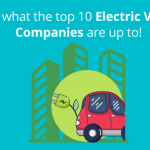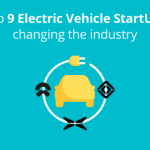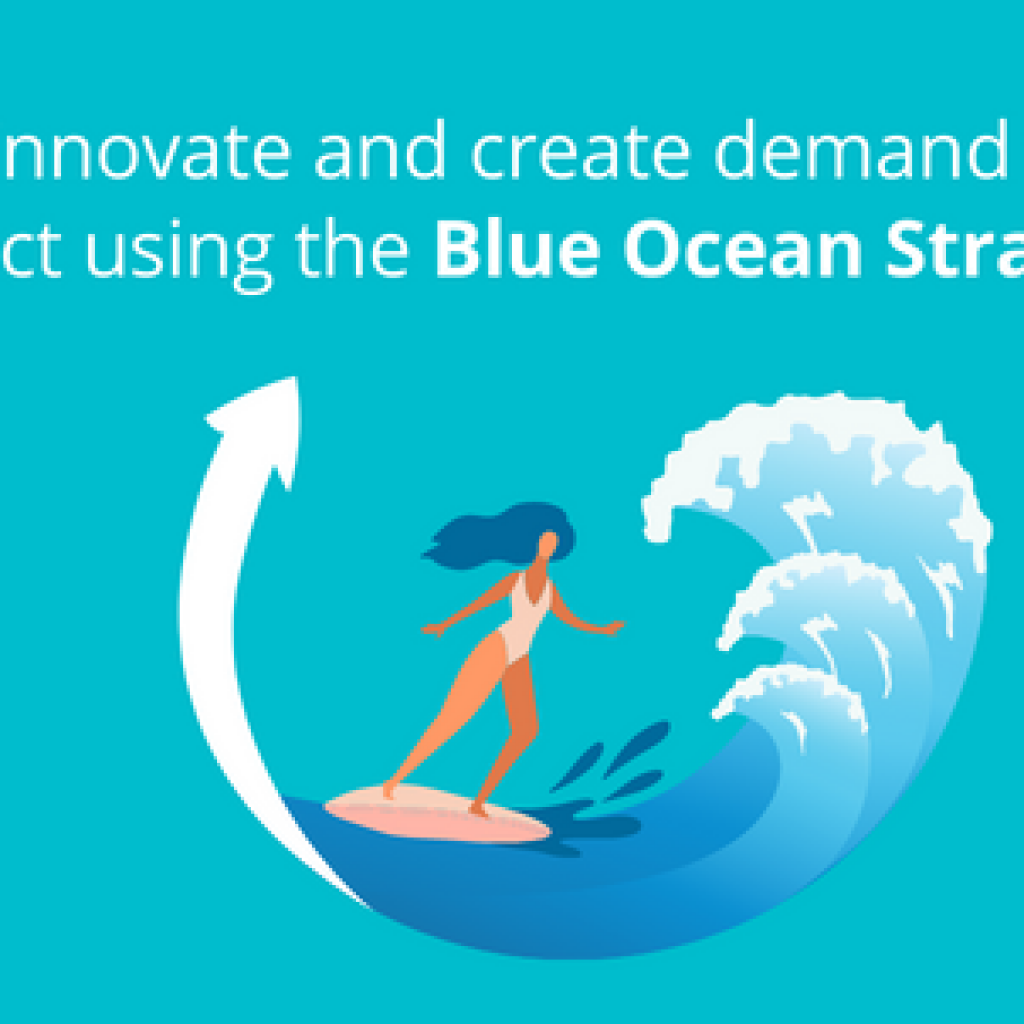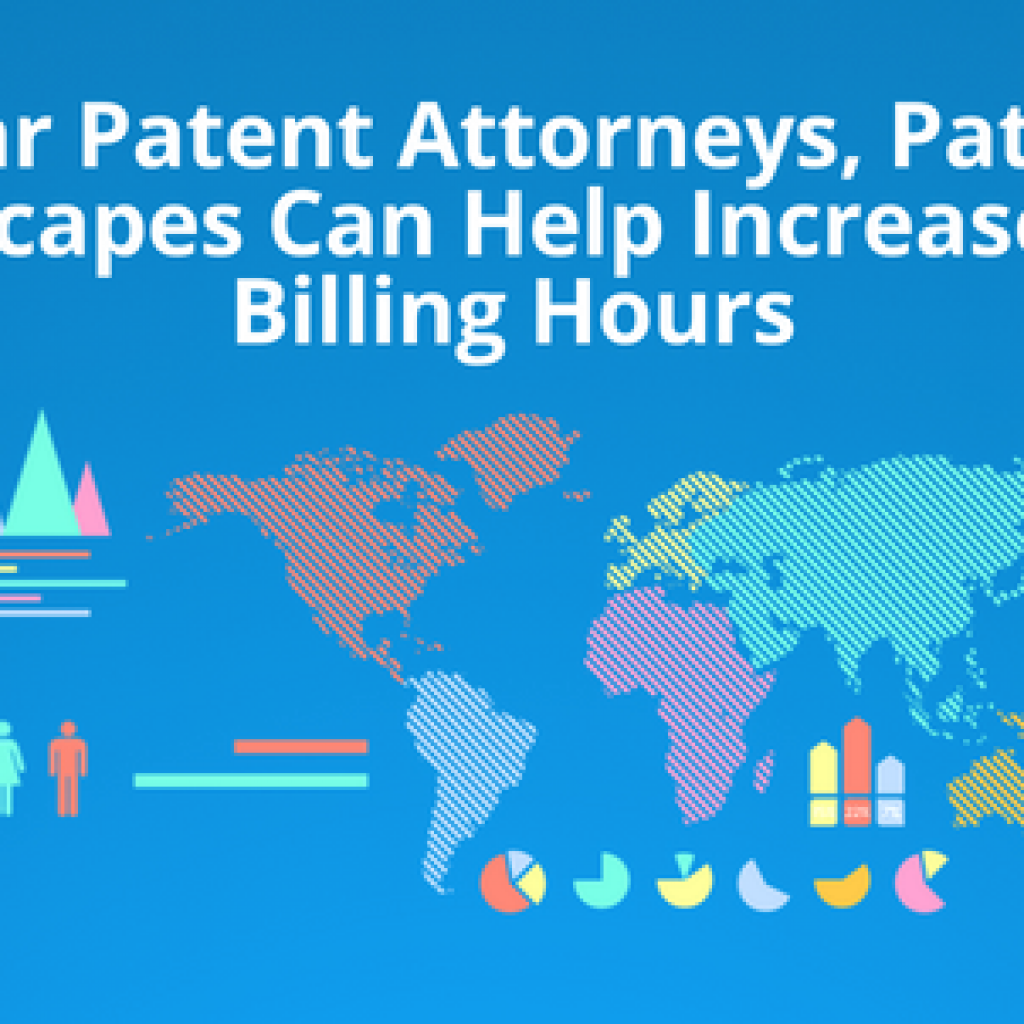With research in the Electric Vehicle domain ongoing for more than a decade, a number of companies are now standing as competitors to Tesla. But, at the moment it seems that ‘Tesla’ has become synonymous with Electric Vehicles given that it has the first-mover advantage. Though, it is not the only one working on the Electric Vehicle aspects.
The main aspects of electric vehicles include Batteries, Motors, Charging Methods, and Charging Infrastructure. However, in the article, we mainly discuss the three aspects of EVs, i.e. Charging Methods, Electric Motors, and Charging Infrastructure, and which companies and startups are making progress in these areas.
Some of the companies listed in the article hold enough expertise in EV research that can be utilized by an automotive company either through an acquisition or a partnership.
Further, we also have a detailed EV Research Trends and Analysis Report that you can get by filling out the form below:
So, without further ado, let’s start by covering the first aspect of electric vehicles – the EV Charging Method.
EV Battery Charging
EV Batteries are charged in two ways: inductively or conductively.
Inductive Charging systems make use of wireless energy transfer and are therefore also known as Wireless Charging Systems (WCS). WCS may be either stationary or dynamic, with the latter enabling the battery to be charged even as the vehicle is moving. In general, WCS can provide benefits in terms of aesthetics, dependability, durability, and user-friendliness. Inductive chargers, however, are not as widely used (and marketed) as conductive chargers. This is mainly due to difficulties with electromagnetic compatibility (EMC), restricted power transmission, bulky and costly constructions, shorter range, and inferior efficiency.
On the other hand, conductive charging uses direct contact between the EV connector and the charge inlet: The charging plug that EVs are usually pictured with. The cable can be fed from a standard electrical outlet or charging station. There are two methods employed in EV charging stations using conductive methods, i.e. AC chargers and DC chargers.
Wireless Charging
Inductive charging transfers energy between two objects by utilizing an electromagnetic (EM) field. A charging station uses this method for transferring the charging energy from the charging station/equipment to the EV’s charger/battery. More specifically, inductive chargers use an induction coil to generate an alternating EM field from the charging base, which is received by the EV’s inductive charging electronics, (that includes a second induction coil). The EV’s onboard charging electronics convert these EM fields back to electric current to charge the EV’s battery.
- The absence of cables is a significant benefit of this technology. This makes the charging process faster because consumers do not have to worry about exiting the car to charge it. The wireless power transmission allows the user to charge the car instantly and without any problems. Another advantage of wireless charging is that it saves time. If on-the-go charging is enabled, the market will undoubtedly witness an increase in the sale of EVs.
- A wireless charging system may be able to minimize the size of the battery utilized within the car. This will allow the car’s battery to be much smaller and lighter. These two parameters are crucial since they are most likely to impact the overall EV cost. The batteries used in electric cars nowadays are especially hefty. This is to guarantee that they have adequate power to drive the automobile for a few hundred miles. However, if the automobile can be charged fast without the need for cables or charging stations, the battery does not need to be as massive.
Startups Working on Wireless Charging
WiTricity
WiTricity is the pioneer in the development of inductive charging systems for electric vehicles, that is as quick and effective as plugging in. WiTricity technology offers a one-of-a-kind solution for all sizes and power requirements. WiTricity power sources and receivers are specifically constructed magnetic resonators that transfer power over long distances using the magnetic near-field.
Magnetic Resonance is the only technique that fulfills automakers’ wireless charging criteria. The WiTricity team demonstrated that the magnetic fields of two carefully designed devices with closely aligned resonant frequencies can couple into a single unified magnetic field. This allows power to be transferred from one device to the other with high efficiency, and over a distance range useful for real-world applications. WiTricity Corporation is the exclusive licensee of MIT Wireless Energy Transfer patents. WiTricity has over 1,000 granted patents throughout the globe.
Momentum Dynamics
Momentum Dynamics is a pioneer in the development of electric car wireless power charging technology. The company’s patented magnetic induction technique allows commercial and passenger electric and hybrid cars to charge their batteries automatically in all-weather situations.
Inductive charging systems are very efficient and self-contained. The technique developed by the company is based on the scientific basis of resonant magnetic induction and allows quick, automated opportunity charging for electric cars with no moving components. An alternating current is supplied into a resonant transmission coil, which generates a magnetic field. The magnetic field is caught by a resonant receiving coil, which generates an alternating current.
HEVO
HEVO is a pioneer in EV wireless charging, software, and services to improve the driving, charging, and pleasure of electric vehicles. The HEVO app, which is seamlessly synchronized through the cloud, communicates between the physical components and acts as the only interface with the end-user.
The HEVO Rezonant E8 Vehicle Pad is a wireless receiver and alignment device that provides aftermarket and automaker alternatives. Within the limitations set by SAE J2954, built-in shielding avoids undesired emissions and protects against stray electromagnetic fields. The company has around 14 patents in its EV Charging portfolio.
ELIX
ELIX develops a fundamentally exceptional wireless power transfer method called MagnetoDynamic Coupling, which is used to deliver secure, efficient power to a variety of applications and markets including full-scale EV charging, auxiliary battery charging, factory charging, underwater charging, and healthcare charging.
The ELIX MDC does not use inductive coupling. Instead, MDC uses magnetic interactions to provide effective and scalable connected systems, with the ability to combine systems for greater power levels and modular operation.
MAGMENT
MAGMENT focuses on the research, design, and production of magnetizable concrete for creative, competitive, and customer-oriented electromagnetic solutions. Their primary uses are inductive components and dynamic wireless transmission for electric vehicles (EVs). MAGMENT’s concrete is exceptionally competitive since they employ recycled magnetic materials as aggregates.
The MagPad is MAGMENT’s wireless solution, which is extremely flexible in terms of size, power level, and application, as well as consistent in terms of performance, resilience, and scalability. The device has a power range of 200 W to 250 kW.
Conductive Charging
Conductive charging uses a direct connection between the EV connector and the charger equipment. The cable can be fed from a standard electrical outlet or charging station. The conductive charger for EVs has the advantages of maturity, simplicity, and low cost because it simply makes use of plugs and sockets to conduct electrical energy via physical conductors. There are two methods employed in EV charging stations using the conductive methods -AC chargers (or onboard chargers) and DC chargers (or off-board chargers).
Most common power outlets use AC charging for their charge process. The vehicle has to be connected to an ordinary electric socket or a higher power outlet specifically designed for EVs. The space and materials needed for this type of charging station are quite small. However, charging takes longer. Further, the car has to be equipped with an onboard charging unit.
DC charging is accomplished by the use of a DC charger. It employs specific DC EV supply equipment to transfer energy from a suitable off-board charger to an EV in either private or public settings. It is known as fast DC charging. There is power level flexibility, unlike onboard chargers. It can be used up to 50KW i.e. battery can be charged in 20 minutes from empty to 80% full.
- The conductive charger for EVs provides the advantages of maturity, accessibility, and is relatively lower cost since it uses comparatively traditional means for transferring power to the EV (Conductors, plugs, sockets, etc.) Conducting charging is also significantly more efficient than wireless charging. And it additionally has the benefit of far lower electromagnetic emissions. It is also safer as it omits the need for foreign object detection (something that is important in inductive charging).
Startups Working on Conductive Charging
Continental Engineering Services
CES is designing a “charging robot” which is an automated conductive charging method. This unique conductive charging robot provides the motorist with convenient and time-saving charging. This technology would significantly boost user acceptance of electromobility.
The CES charging robot consists of two parts: a vehicle unit installed on the vehicle floor and a ground unit put on the ground in the chosen charging location. CES communicates with the Ground Unit via WLAN and gives the relative location of the Ground Unit to the automobile for the guiding system.
EVgo
EVgo is the nation’s biggest public rapid charging network for electric vehicles, powered entirely by renewable energy. EVgo has 800+fast charging facilities in 34 states. In San Francisco, Los Angeles, Seattle, and other places, EVgo fast chargers offer 50kW or more and can charge any EV that takes a fast charge, from LEAFs and BMWs to Bolts and even Tesla Models 3/X/S/Y with a CHAdeMO converter or Tesla Connectors.
EVgo provides charging solutions in 3 different levels.
- Level 1 charging uses a conventional wall plug, and an electric vehicle may be charged at a rate of 3 – 5 miles per hour.
- Level 2 Charging uses a 240V outlet (similar to an electric dryer plug), increases the power, and delivers 15 – 30 miles per hour of charge.
- And Level 3 DC Fast Charging utilizes a charging system that charges the vehicle’s battery using DC current at higher voltage, allowing for fast charging in minutes rather than hours.
ChargePoint
ChargePoint electric vehicle (EV) charging stations are built with cutting-edge hardware technology to be safe and dependable, and the ChargePoint stations are part of a comprehensive solution that includes round-the-clock driver assistance, cloud-based software with features, and plans for every sector, and world-class servicing and maintenance.
ChargePoint AC stations provide charging for companies, apartment buildings, and fleet depots. AC charging stations include the CP4100, CP4300, CPF32, Alfen Eve Single Pro-Line, and Alfen Eve Double Pro-Line. ChargePoint DC stations offer high-capacity charging for commercial and industrial applications. Express 250, Express Plus, ABB Terra DC-Wallbox, ABB Terra HP Charger, and Alpitronic Hypercharger HYC150/HYC300 are some of the DC charging stations.
Wallbox
Wallbox provides a comprehensive array of DC charging options that are ideal for each possible situation.
Supernova is the next-generation fast-charger that provides dependable and efficient operation at up to half the cost of comparable chargers.
Hypernova is the ultra-fast charger that completes our public charging solution offering. With a maximum power of 350 kW, it is excellent for charging stations geared at long-distance travel. The Hypernova will start production and delivery in early 2023.
FreeWire
The products of FreeWire enable the scalable implementation of ultrafast electric car charging. The innovative integration of battery technology, power conversion technology, and software offers customers a flexible and fully-integrated approach.
The Boost Charger is an ultrafast EV charging solution that is completely integrated and can be put anywhere. The integrated energy storage and patented management software of Boost Charger cut energy expenses by up to 70% when compared to traditional systems.
Freewire’s Mobi EV Charger is a transportable power system that can be swiftly deployed to fulfill the rising demand for electric vehicles while requiring no extra fixed infrastructure. The Mobi Gen is a clean and quiet on-site power solution for facilities or distant areas that require a reliable power supply.
Battery Swapping
Battery swapping for electric cars is a concept explored a decade ago to overcome the sluggish charging periods and allow drivers to continue their travels with minimal delay. However, the plan failed due to a number of factors, including the high expenses of installing infrastructure and a lack of standards and vehicle compatibility. According to recent Lux Research, it looks to be on the verge of a comeback, particularly for big fleet use.
The most significant advantage of battery swapping is that the battery can be changed in a matter of minutes, rather than having to wait for it to charge. Batteries may be charged away from the switching point, giving customers greater flexibility when it comes to setting up exchange facilities. As battery leasing replaces battery ownership, the initial cost of an EV is reduced. Increased battery life is also predicted as a result of regulated charging circumstances.
Startups Working on Battery Swapping
NIO
NIO isn’t the first company that applies battery swap in its vehicles, but it is probably the first company that has implemented battery swapping the right way. Tesla also tried, but it wasn’t feasible, so they had to drop it. NIO also has the support of the government and now has the massive infrastructure and technology for feasible battery swapping services.
By Oct 2021, NIO had 517 swap stations in China.
NIO named it station Power Swap Station 2.0 which is capable of completing 312 battery swaps per day. By Sep 2021, NIO has completed 4 million battery swaps in China. China being a primary EV market, NIO has to focus on customer experience and reviews from its customer base show that battery swapping is one of the main reasons they buy NIO’s vehicles.
Geely
The first E-Energee battery switching station from Geely Technology Group went live in September 2020. Drivers using the E-Energee service may exchange their battery for a fully charged one in 59 seconds owing to an automatic registration payment service that allows them to drive into the station and immediately swap the battery.
Gogoro
The Gogoro offers a fully integrated battery-changing option for electric vehicles. The GoStation Sites make battery replacement a breeze. GoStation Sites occupy less area than a parking spot and are quick and simple to install in a variety of locations. In real-time, the Gogoro App connects to the whole Gogoro Network. Gogoro’s cloud-connected nerve center is SmartGEN. Its artificial intelligence continually learns from riding patterns and exchange behavior to predict when and where full batteries will be required.
Ample
Ample is another significant player in the EV Battery Swapping industry. The Ample station can determine the precise location of each battery module to be replaced using a mix of computer vision and secure wireless connection with the car. Once the drained battery modules have been removed from the vehicle, they are stored on shelves to be charged and ready for the next vehicle.
Learn more about startups working on Electric Vehicle Charging Technology? Click here.
Electric Motor in EVs
Electric cars are not new to the globe, but technical advances and greater concern about pollution control have given them the label of future mobility. Aside from Electric Vehicle Batteries, the primary component of the EV that substitutes internal combustion engines is the electric motor. Rapid advancements in power electronics and control techniques have generated a market for several types of electric motors to be utilized in electric vehicles.
Three Phase AC Induction Motor
Under constant voltage and fixed-frequency operation, induction motors do not have a high starting torque like DC series motors. However, this feature may be changed by employing alternative control approaches such as FOC.
Field-oriented control (FOC) is a technique for variable frequency control of the stator in a three-phase AC induction motor drive using two orthogonal components. One defines the magnetic flux generated by the stator, while the other corresponds to the torque as determined by the speed of the motor determined by the rotor position.
The maximal torque is made accessible at the start of the motor by applying these control methods, which are suited for traction applications. Because it requires minimal maintenance, squirrel cage induction motors have a long life. Induction motors may be constructed with efficiencies ranging from 92% to 95%. The disadvantage of an induction motor is that it requires a complicated inverter circuit and is difficult to operate.
When compared to its competitors, the Tesla Model S is the greatest example of the high-performance capabilities of induction motors. Tesla may have used induction motors in order to reduce their reliance on permanent magnets. The Mahindra Reva e2o is also propelled by a three-phase induction motor.
Permanent Magnet Brushless DC Motor
A brushless DC motor (referred to as a BLDC motor or BL motor) is an electronically commutated DC motor that lacks brushes. The controller sends current pulses to the motor windings, which govern the synchronous motor’s speed and torque. These motors are extremely efficient at providing a big amount of torque across a wide speed range. Permanent magnets move around a fixed armature in brushless motors, overcoming the challenge of connecting electricity to the armature. Electronic commutation provides a wide range of capabilities and flexibility.
Permanent brushless motors are more efficient since their velocity is dictated by the frequency with which the current is provided rather than the voltage. BLDCs are classified into two types: outer rotor motors and inner rotor motors. They also have the advantage of being able to run at high speeds in most circumstances. For more exact control, additional electromagnets might be employed on the stator.
Permanent Magnet Synchronous Motor
This motor is likewise comparable to a BLDC motor in that the rotor contains permanent magnets. These motors, like BLDC motors, offer traction properties such as high power density and efficiency. The back EMF of PMSM is sinusoidal, whereas the back EMF of BLDC is trapezoidal. Permanent Magnet Synchronous motors with higher power ratings are available. PMSM is the finest solution for high-performance applications such as automobiles and buses. Despite their expensive cost, PMSMs provide significant competition to induction motors due to their higher efficiency. PMSM motors are likewise more expensive than BLDC motors. PMSM motors are used by the majority of automobile manufacturers in hybrid and electric cars such as Toyota, Ford, Chevrolet, Nissan, etc.
Switched Reluctance Motor
Switched Reluctance motors are lightweight and durable. The SRM’s rotor is made of laminated steel and has no windings or permanent magnets. This reduces the rotor’s inertia, which aids in rapid acceleration. SRM’s robustness makes it appropriate for high-speed applications. SRM also provides great power density, which is one of the requirements for electric vehicles. It is easier to cool the motor since the heat generated is generally contained in the stator. The SRM’s main disadvantage is the increased control complexity and switching circuit complexity. There are also some difficulties with electromagnetic noise. When SRM enters the commercial market, it has the potential to replace PMSM and induction motors in the future.
EV Charging Infrastructure
The global demand for charging infrastructure will see tremendous growth in the coming 5 years as the global market is adopting EVs at a faster rate. The demand is what has led several companies and startups to develop charging infrastructure for EVs.
The technology is still in progress and still needs solutions to several issues like decreasing charging time, and building charging stations throughout a locality so that consumers don’t face trouble when going for a long trip.
There are fast-charging stations available, but they are limited in some countries and still need an upgrade. A larger portion of EV users still uses distributed charging stations to charge their vehicles.
Distributed Charging
The Distributed Infrastructure comprises tiny chargers scattered throughout the electrical supply. It may be in the form of chargers available at home, or it could be additional chargers in proximity, such as at work or in parking lots. In order to support V2G operation, chargers should be equipped with suitable bi-directional charging capabilities as well as safety measures.
In distributed infrastructure, all of the batteries in individual cars are viewed as a single large, aggregated battery with a capacity equal to the total of all batteries and a grid connection equal to the sum of individual grid connections. There would be no need for additional transmission lines; nevertheless, bidirectional power flow necessitates extra expenditures in the low voltage system.
EV Smart charging has a tremendous impact on the whole EV charging ecosystem, from the utility to individual EV drivers. It optimizes and stabilizes energy flow within a balanced grid, resulting in more dependable service and higher quality electricity. Smart energy management allows utilities to improve their infrastructure by efficiently distributing available electricity between automobiles and other power customers. When overall network demand is low, utilities can incentivize later-in-the-day charging by supplying electricity from their solar power reserves and pushing late-night charging.
Startups Working on Distributed Charging Infrastructure
- Since 2010, EVBox electric car charging systems have assisted thousands of forward-thinking enterprises across the world in adopting and achieving electric mobility goals. EVBox BusinessLine is their best-selling EV charger, with proven durability for use in residences, offices, and commercial charging. Another device, the EVBox Iqon, makes EV charging more accessible, intelligent, and dependable. EVBox Iqon, which is designed exclusively for the North American market, provides a superior charging experience at commercial sites.
- Delta’s EV Charging Solutions are suitable for use in a variety of residential, commercial, workplace, public, and fleet charging locations. Delta has a diverse product range that includes DC chargers, AC chargers, and charging construction managing systems. The output power of Delta AC chargers ranges from 7 to 22 kW. Their AC chargers are ideal for both business and household charging because of their small design, worldwide charging interface support, user permission, and ease of installation.
- ABB sets the groundwork for a future of smarter, more dependable, and emission-free transportation for everyone, everywhere. ABB provides a complete EV charging solution, from small, high-quality AC wall boxes to dependable DC fast-charging stations with a solid connection. They also build infrastructure to fulfill the demands of the future generation of intelligent transportation.
Fast Charging
Fast charging infrastructure includes the installation of fast-charging stations in various locations that fill the battery of an EV with a high-power connection that allows higher amounts of power to charge the EV’s battery (and hence charge it faster). Battery capacity should be kept high; otherwise, quick charging will result in brief periods of excessive power demand. The ability to fast-charge an EV battery, however, is dependent on the battery type and manufacturer. This infrastructure necessitates the development of a rapid charging station as well as a high-power grid connection. Because these EV batteries are only linked to the grid during rapid charging, they will be unable to do any V2G operations.
Startups Working on Fast Charging
- Efacec aspires to be the chosen partner in providing innovative and personalized solutions for energy, mobility, and the environment across the world. Efacec Rapid Chargers (QC 60/90/120) with outputs ranging from 60 kW to 120 kW are Quick Charging stations capable of charging any EVs that comply with CHAdeMO, CCS, and AC Type-2 (fast) charging.
- The EVBox Troniq 100 is an award-winning DC fast charger. The EVBox Troniq has a strong output of up to 100 kW, allowing for a flawless EV charging experience at the customer’s location. Its independent integrated architecture enables easy installation and setup, and its shape allows it to fit in almost any layout, even in small places.
- Tritium develops and produces unique hardware and software to provide innovative and dependable DC fast chargers for electric vehicles. Tritium’s small and sturdy chargers are meant to look excellent on Main Street while also thriving in severe environments, thanks to technology that is simple to install, own, and use. Tritium offers solutions ranging in power from 50kW to 350kW.
Conclusion
The growth of the Electric Vehicles industry is inevitable and it will surely pick up speed in the coming years. But, there are some restraints that both companies and consumers must overcome in order to let EV flourish. For example, Covid-19 and chip shortage being temporary challenges are still affecting the demand and supply of EVs. Further, there are technical issues that companies need to overcome, in the context of battery charging, electric motors, and battery thermal management areas. Once solutions to these issues are addressed, a sudden boost is attainable in the sector.
There are some EV Battery startups who are already innovating in the domain. Why not go ahead and check them out!










